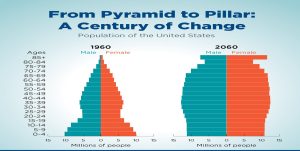Digital currencies have been making waves in the financial world, transforming traditional systems and paving the way for anticipated economic shifts. The increased usage of digital currencies, such as Bitcoin and Ethereum, has the potential to revolutionize how we conduct transactions and store value. As more businesses and individuals adopt these digital assets, we can
Digital currencies have been making waves in the financial world, transforming traditional systems and paving the way for anticipated economic shifts. The increased usage of digital currencies, such as Bitcoin and Ethereum, has the potential to revolutionize how we conduct transactions and store value. As more businesses and individuals adopt these digital assets, we can expect to see significant changes in the global economy.
Digital currencies
One of the key ways in which digital currencies are impacting anticipated economic shifts is through their ability to streamline financial transactions. With digital currencies, transactions can be completed quickly and securely, without the need for intermediaries such as banks. This has the potential to lower transaction costs and increase efficiency in the financial system, leading to economic shifts in various industries.
Furthermore, the rise of digital currencies is also challenging the traditional banking system and central banks. As more people turn to digital currencies as a store of value and means of exchange, central banks may need to adapt their monetary policies to accommodate this shift. This could lead to changes in interest rates, inflation, and other economic indicators, ultimately shaping the future of the global economy.
In conclusion, the impact of digital currencies on anticipated economic shifts cannot be understated. As these digital assets continue to gain popularity and acceptance, we can expect to see significant changes in how we conduct financial transactions and store value. It is essential for businesses and policymakers to stay informed about these developments and adapt their strategies accordingly to thrive in this new digital economy.
Trade Agreements and Tariff Changes

Image by : Yandex
Trade agreements play a crucial role in shaping anticipated economic shifts, as they can impact the flow of goods and services between countries. The negotiation and ratification of trade agreements can lead to changes in tariffs, quotas, and regulations, which can have far-reaching effects on various industries and economies.
Tariff changes, in particular, can lead to economic shifts in industries that rely heavily on international trade. When tariffs are increased, the cost of imported goods rises, making them less competitive in the domestic market. This can lead to job losses, decreased consumer spending, and overall economic slowdown. On the other hand, reducing tariffs can stimulate economic growth by increasing access to foreign markets and promoting exports.
Overall, trade agreements and tariff changes have the potential to shape anticipated economic shifts in a significant way. It is essential for businesses to stay informed about these developments and adapt their strategies to navigate the changing global trade landscape.
Demographic Shifts and Aging Population
Demographic shifts, such as changes in population size, age distribution, and migration patterns, can have a profound impact on anticipated economic shifts. As populations age and birth rates decline in many countries, the workforce may shrink, leading to labor shortages and increased demand for healthcare and social services.
The aging population, in particular, influences economic changes in various sectors, such as healthcare, housing, and consumer goods. As people live longer and retire later, there is a growing need for products and services tailored to older adults. This can create new opportunities for businesses that cater to this demographic, while also posing challenges for industries that rely on a younger workforce.
Conclusion
In conclusion, demographic shifts and the aging population are key factors to consider when anticipating economic shifts. It is essential for businesses and policymakers to understand these trends and adapt their strategies to meet the changing needs of an aging population. By investing in healthcare, social services, and innovative solutions, we can mitigate the negative impacts of demographic shifts and create a more sustainable economy for the future.
















